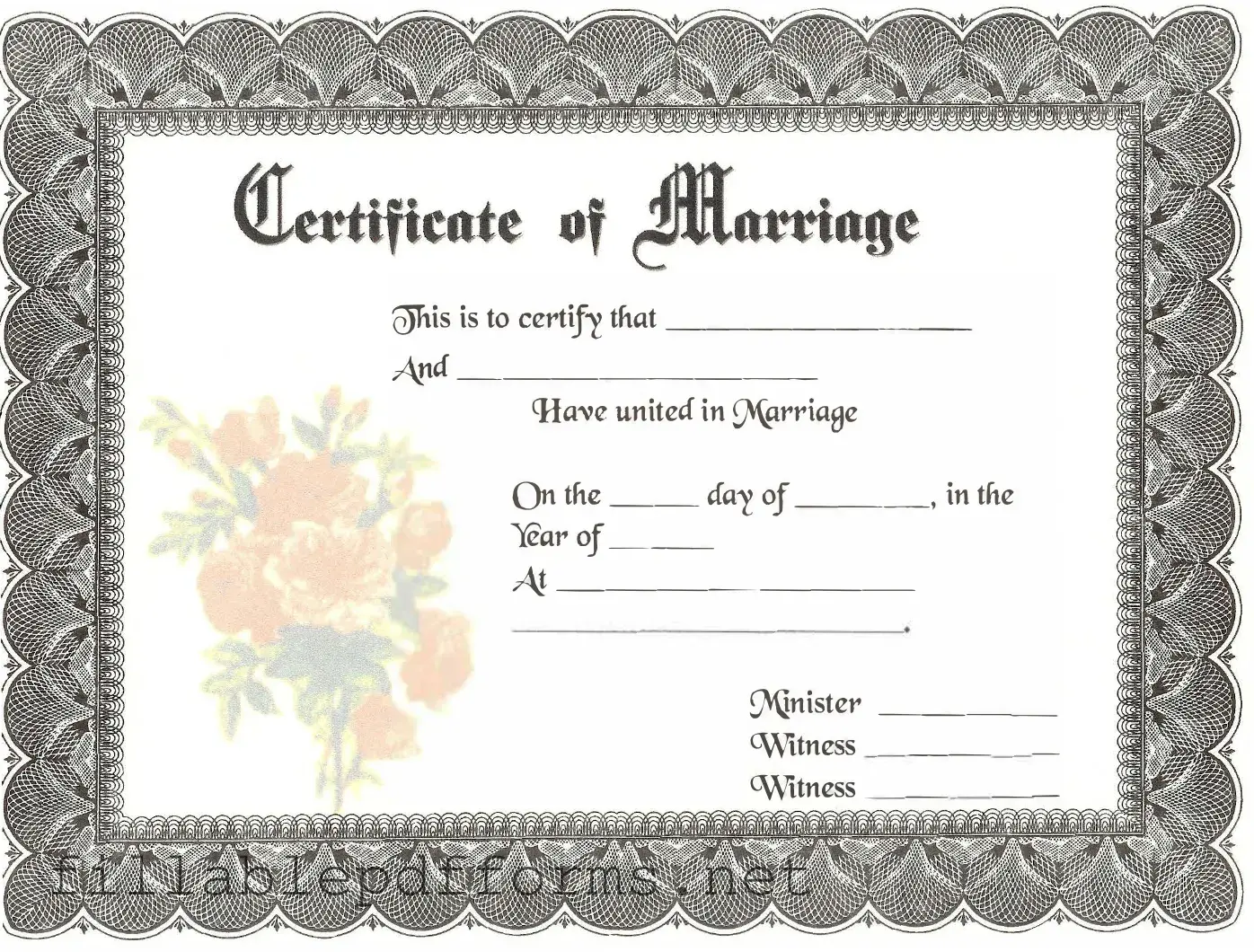Marriage Certificate PDF Template
A Marriage Certificate form is an official document that records the union between two individuals in marriage. This form serves as proof of the marriage and is often required for legal purposes, such as changing names or applying for benefits. Understanding the details and requirements of this form is essential for couples planning to marry.
Launch Editor Here
